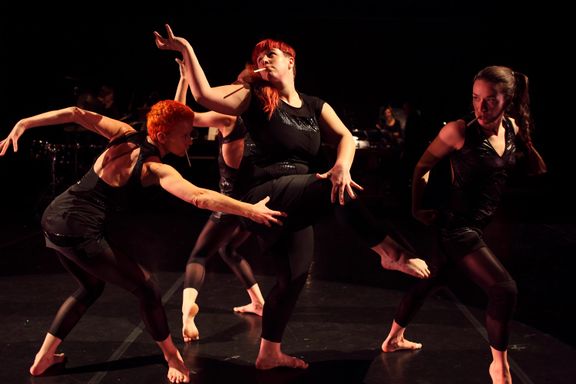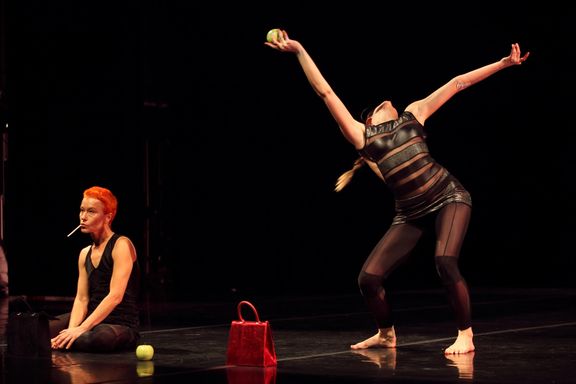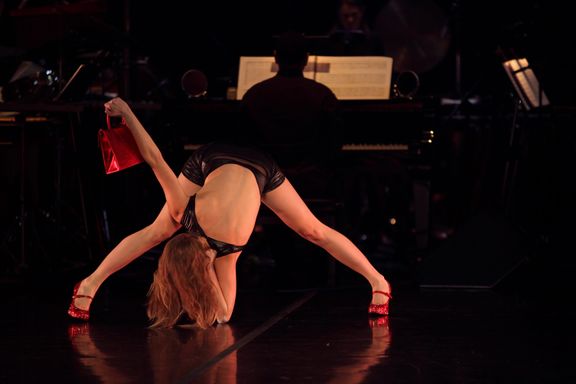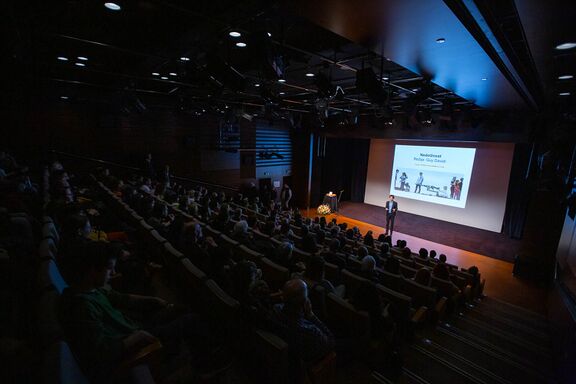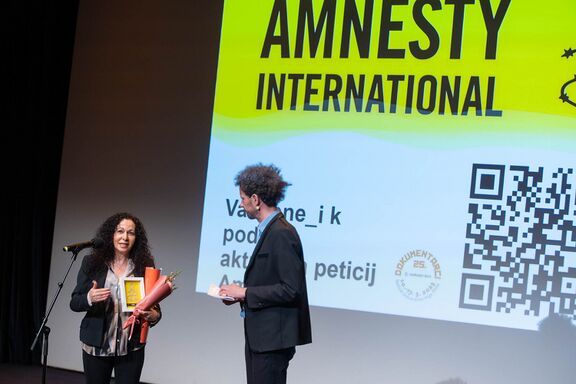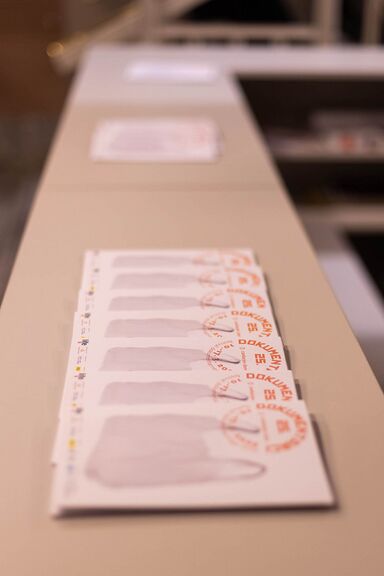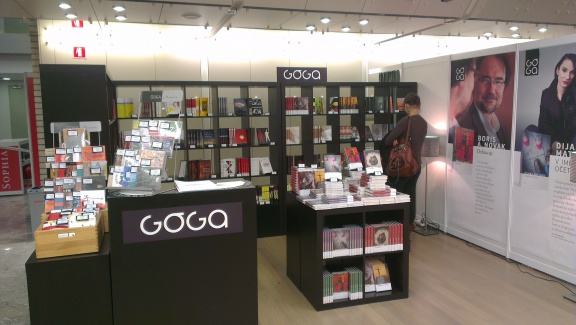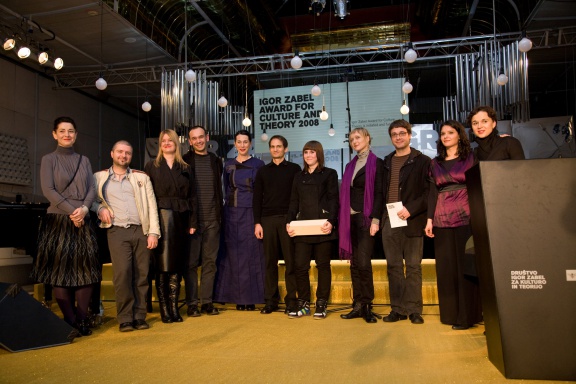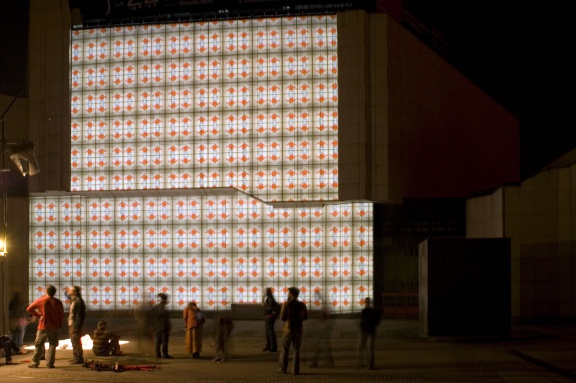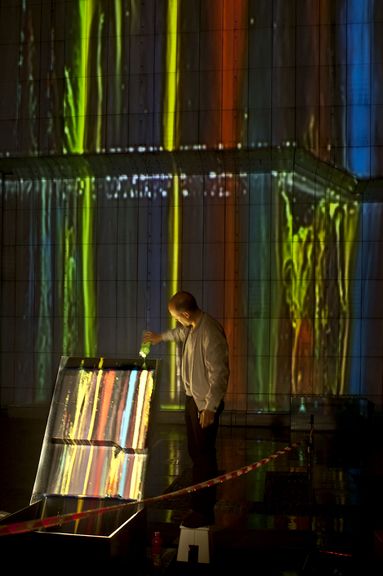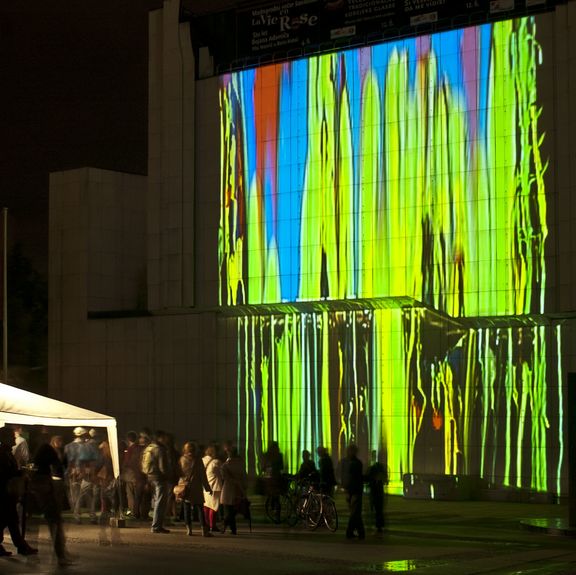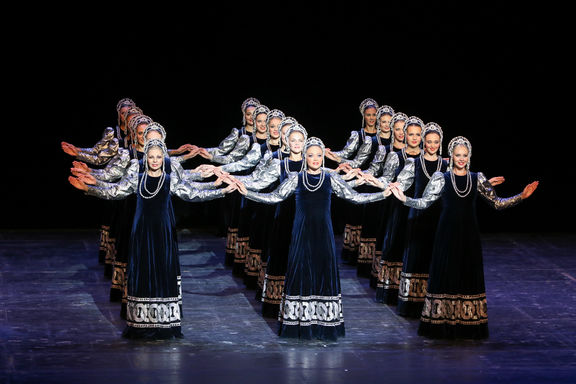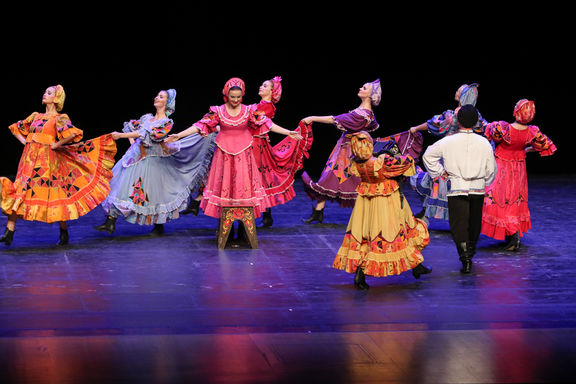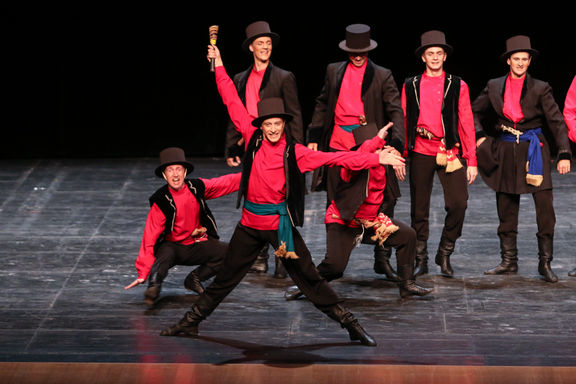Difference between revisions of "Cankarjev dom, Cultural and Congress Centre"
JoelDSmith (talk | contribs) |
JoelDSmith (talk | contribs) |
||
| Line 40: | Line 40: | ||
{{wide image|Cankarjev dom Cultural and Congress Centre 2013 01.jpg}} | {{wide image|Cankarjev dom Cultural and Congress Centre 2013 01.jpg}} | ||
| + | |||
[[Cankarjev dom, Cultural and Congress Centre|Cankarjev dom]] (CD), situated in the centre of Ljubljana, is the country's largest cultural and congress centre, and one of the largest in the Balkan and SEE region. It provides around 36,000 square metres of space, and holds over 1,200 events annually. The centre opened in [[established::1980]] and was the last part of the Revolution Square (''Trg revolucije'') complex to be completed. Like the rest of the complex, it was designed by renowned Slovenian architect [[Edvard Ravnikar]], who had been a student of [[Jože Plečnik]] and, briefly, Le Corbusier in the late 1930s. | [[Cankarjev dom, Cultural and Congress Centre|Cankarjev dom]] (CD), situated in the centre of Ljubljana, is the country's largest cultural and congress centre, and one of the largest in the Balkan and SEE region. It provides around 36,000 square metres of space, and holds over 1,200 events annually. The centre opened in [[established::1980]] and was the last part of the Revolution Square (''Trg revolucije'') complex to be completed. Like the rest of the complex, it was designed by renowned Slovenian architect [[Edvard Ravnikar]], who had been a student of [[Jože Plečnik]] and, briefly, Le Corbusier in the late 1930s. | ||
| Line 53: | Line 54: | ||
The centre's first events were held in the spring of 1980 (in [[Linhart Hall]]), although it was not until 1982 that the site became fully operational. The famous monument to Cankar by sculptor [[Slavko Tihec]], which stands adjacent to one of the main entrances, was unveiled in 1982. | The centre's first events were held in the spring of 1980 (in [[Linhart Hall]]), although it was not until 1982 that the site became fully operational. The famous monument to Cankar by sculptor [[Slavko Tihec]], which stands adjacent to one of the main entrances, was unveiled in 1982. | ||
| − | {{YouTube| | + | {{YouTube|vQ6LjZHhGAY}} |
Over the years, the centre has established itself as a major tour stop for world-class ensemble and individual performers in almost all branches of music and the performing arts, with younger experimental artists also gaining an ever-stronger foothold. It has also become a prolific organiser or host, alone and in collaboration, of a wide variety of festivals; these include the [[Ljubljana International Film Festival (LIFFe)]], the [[International Documentary Film Festival]], [[Ljubljana Jazz Festival]], [[Bi Flamenko International Flamenco Festival]], the [[Biennial of Slovene Book Illustration]] and the [[Slovene Book Fair|Slovenian Book Fair]]. | Over the years, the centre has established itself as a major tour stop for world-class ensemble and individual performers in almost all branches of music and the performing arts, with younger experimental artists also gaining an ever-stronger foothold. It has also become a prolific organiser or host, alone and in collaboration, of a wide variety of festivals; these include the [[Ljubljana International Film Festival (LIFFe)]], the [[International Documentary Film Festival]], [[Ljubljana Jazz Festival]], [[Bi Flamenko International Flamenco Festival]], the [[Biennial of Slovene Book Illustration]] and the [[Slovene Book Fair|Slovenian Book Fair]]. | ||
| Line 133: | Line 134: | ||
*'''back stage:''' dressing rooms plus various additional areas shared with other venues accommodating 250 persons total | *'''back stage:''' dressing rooms plus various additional areas shared with other venues accommodating 250 persons total | ||
| − | ===Klub Cankarjeva doma | + | ===CD Club (Klub Cankarjeva doma)=== |
| − | === | + | ===Lili Novy Glass Hall (Steklena dvorana Lili Novy)=== |
===Other facilities=== | ===Other facilities=== | ||
Revision as of 17:05, 3 February 2021
-
28 Aug 2024
"Beograjski Trio - Belgrade trio", a theatre play adapted after Goran Marković's eponymous novel. Directed by Matjaž Berger and produced by Anton Podbevšek Theatre in cooperation with Cankarjev dom, Cultural and Congress Centre.
-
24 Apr 2024
A performance of "Saint Joan of the Stockyards - Sveta Ivana Klavniška", a Slovene production of Bertold Brecht's play by Mladinsko Theatre in collaboration with Cankarjev dom. Featuring music by Laibach and cast members from Slovenia, Italy, and Luxembourg. Coproduced by Emilia Romagna Teatro Bologna/Teatro Nazionale, TNL – Théâtre National du Luxembourg, ErosAntEros – POLIS Teatro Festival, and Teatro Stabile di Bolzano.
-
to
18 Apr 2024
21 Apr 2024
Four performances of "Saint Joan of the Stockyards - Sveta Ivana Klavniška", a Slovene production of Bertold Brecht's play by Mladinsko Theatre in collaboration with Cankarjev dom. Featuring music by Laibach and cast members from Slovenia, Italy, and Luxembourg. Coproduced by Emilia Romagna Teatro Bologna/Teatro Nazionale, TNL – Théâtre National du Luxembourg, ErosAntEros – POLIS Teatro Festival, and Teatro Stabile di Bolzano. The play premieres on the 18th of April.
-
16 Mar 2024
Two performances of the ballet "Faust", choreographed by Edward Clug and co-produced by the ballet ansamble of Slovene National Theatre Maribor and Cankarjev dom, in collaboration with Opernhaus Zürich.
-
to
25 Jan 2020
26 Jan 2020
The dance performance Fight Bright by Milan Tomášik, produced by Cortesia Cultural Association and co-produced by Dance Theatre Ljubljana and Cankarjev dom, Cultural and Congress Centre,
-
to
16 Nov 2019
17 Nov 2019
The theatre performance The Bailiff Yerney and His Rights, directed by Žiga Divjak and produced by Cankarjev dom, Cultural and Congress Centre and Academy of Theatre, Radio, Film and Television (AGRFT), supported by the Slovenian Cultural Centre in Berlin,
at the Fast Forward European Festival of Young Directors
-
27 Oct 2019
The performance The Iliad, directed by Jernej Lorenci and produced by the Slovene National Theatre Drama Ljubljana, Ljubljana City Theatre (MGL) and Cankarjev dom, Cultural and Congress Centre,
at the Kielce International Theatre Festival,
-
to
24 Jun 2019
27 Jun 2019
Theatre performances Stockholm, Pennsylvania, directed by Nataša Barbara Gračner and produced by Ljubljana City Theatre (MGL); Martin Sherman's Bent, directed by Alen Jelen and produced by the ŠKUC Theatre, Cankarjev dom Culture and Congress Centre and Kolaž Institute; and For the Good of All, directed by Nenni Delmestre and co-produced by Slovene National Theatre Nova Gorica and Koper Theatre,
at the Golden Lion International Festival of Chamber Theatre
-
to
15 Jun 2019
16 Jun 2019
The dance performance Fight Bright by Milan Tomášik, produced by Cortesia Cultural Association and co-produced by Dance Theatre Ljubljana and Cankarjev dom, Cultural and Congress Centre,
-
11 Jun 2019
The dance performance Fight Bright by Milan Tomášik, produced by Cortesia Cultural Association and co-produced by Dance Theatre Ljubljana and Cankarjev dom, Cultural and Congress Centre,
at the Zagreb Dance Week
-
to
25 Oct 2018
27 Oct 2018
The dance performance Solo 2016 by Milan Tomášik, produced by Cortesia Cultural Association and co-produced by Dance Theatre Ljubljana and Cankarjev dom, Cultural and Congress Centre,
at the HYBAJ HO! Festival
-
30 Sep 2018
Croatia Mljet Mljet National Park
The performance Janez Vrečko: KONS:O:VEL, directed by Matjaž Berger and produced by Anton Podbevšek Theatre and Studia humanitatis in cooperation with Cankarjev dom, Cultural and Congress Centre,
-
to
25 Sep 2018
2 Oct 2018
The performances Staging a Play: the Glass Menagerie, choreographed by Matija Ferlin and produced by Emanat Institute (with artist talk with Matija Ferlin and Maja Delak); Solo for Two Voices by Anja Golob, Magdalena Reiter and Milan Tomášik, produced by Mirabelka Institute and co-produced by Dance Theatre Ljubljana and Cankarjev dom, Cultural and Congress Centre; and performance for children Juri Muri in Africa, directed by Ivana Djilas, choreographed by Maša Kagao Knez and produced by the Dance Theatre Ljubljana, supported by the Slovenian Culture and Information Centre, Vienna (SKICA) (Embassy of the Republic of Slovenia Vienna),
at the Pelzverkehr Festival of Dance and Performance
-
12 Sep 2018
The performance The Iliad, directed by Jernej Lorenci and produced by the Slovene National Theatre Drama Ljubljana, Ljubljana City Theatre (MGL) and Cankarjev dom, Cultural and Congress Centre,
at the International Theatre Festival
-
25 Aug 2018
The performance The Triple Life of Antigone, written by Slavoj Žižek and directed by Matjaž Berger, produced by Anton Podbevšek Theatre in cooperation with Cankarjev dom, Cultural and Congress Centre,
at the Korčula Summer Festival
-
to
7 Aug 2018
20 Aug 2018
The performance The Little Wire Girl, directed by Marjan Nečak and produced by the Slovene National Theatre Drama Ljubljana, and The Iliad, directed by Jernej Lorenci and produced by the Slovene National Theatre Drama Ljubljana, Ljubljana City Theatre (MGL) and Cankarjev dom, Cultural and Congress Centre, as the closing performance
at the Ohrid Summer Festival
-
8 Jun 2018
The dance performance Solo for Two Voices by Anja Golob, Magdalena Reiter and Milan Tomášik, produced by Mirabelka Institute and co-produced by Dance Theatre Ljubljana and Cankarjev dom, Cultural and Congress Centre
-
28 Apr 2018
The Iliad, directed by Jernej Lorenci and produced by the Slovene National Theatre Drama Ljubljana, Ljubljana City Theatre (MGL) and Cankarjev dom, Cultural and Congress Centre,
at the Madách International Theatre Meeting (MITEM)
-
21 Apr 2018
The dance performance Solo for Two Voices by Anja Golob, Magdalena Reiter and Milan Tomášik, produced by Mirabelka Institute and co-produced by Dance Theatre Ljubljana and Cankarjev dom, Cultural and Congress Centre,
at the NuDanceFest
-
to
25 Oct 2017
29 Oct 2017
A national stand presenting Slovene music, organised by SIGIC, Slovene Music Information Centre, presenting a new compilation CD Tuning into the World: Slovenia, participating also Cankarjev dom, Druga godba Festival, Okarina Festival Bled and Glitterbeat Records
at the WOMEX, the World Music Expo
-
6 Oct 2017
The Iliad, directed by Jernej Lorenci and produced by the Slovene National Theatre Drama Ljubljana, Ljubljana City Theatre (MGL) and Cankarjev dom, Cultural and Congress Centre,
at the International Theatre Forum TEART
-
18 Jun 2017
The Iliad, directed by Jernej Lorenci and produced by the Slovene National Theatre Drama Ljubljana, Ljubljana City Theatre (MGL) and Cankarjev dom, Cultural and Congress Centre,
at the Sibiu International Theatre Festival
-
9 May 2017
The Iliad, produced by the Slovene National Theatre Drama Ljubljana, Ljubljana City Theatre (MGL) and Cankarjev dom, Cultural and Congress Centre,
-
to
27 Apr 2017
30 Apr 2017
A national stand presenting Slovene jazz music, organised by SIGIC, Slovene Music Information Centre, in addition to stands organised by Cankarjev dom, Jazz Cerkno Festival, supported by the Slovenian Cultural Centre in Berlin and the Embassy of the Republic of Slovenia Berlin
at the jazzahead! Festival and Trade Fair
-
to
2 Jul 2016
6 Jul 2016
Who's Afraid of Virginia Woolf, produced by the Koper Theatre, No Tears for Queers, produced by ŠKUC Association and Cankarjev dom, Cultural and Congress Centre, Madame Bovary, produced by the Slovene National Theatre Nova Gorica, Plato: The Apology of Socrates, produced by Potodom, and Hero 1.0, produced by Mladinsko Theatre and Moment Arts and Culture Association, at the Golden Lion International Festial of Chamber Theatre
-
17 Jun 2016
Maša Kagao Knez’s Momentum, produced by Cankarjev dom, Cultural and Congress Centre, Dance Theatre Ljubljana, Baobab Association and Studio XXV,
-
8 Jun 2016
The Iliad, produced by the Slovene National Theatre Drama Ljubljana, Ljubljana City Theatre (MGL) and Cankarjev dom, Cultural and Congress Centre,
-
5 Jun 2016
The Iliad, produced by the Slovene National Theatre Drama Ljubljana, Ljubljana City Theatre (MGL) and Cankarjev dom, Cultural and Congress Centre, at the International Theatre Festival Varna Summer
-
26 May 2016
The Iliad, produced by the Slovene National Theatre Drama Ljubljana, Ljubljana City Theatre (MGL) and Cankarjev dom, Cultural and Congress Centre, at the International Theatre Festival Kontakt
-
27 Jan 2016
Igor Lumpert & Innertextures: Poseidon, a concert with tenor saxophonist Igor Lumpert in the framework of the DogEar series, curated by Bogdan Benigar (Cankarjev dom, Cultural and Congress Centre),
-
20 Jan 2016
Jure Pukl's Abstract World, a concert with saxophonist Jure Pukl in the framework of the DogEar series, curated by Bogdan Benigar (Cankarjev dom, Cultural and Congress Centre),
-
6 Jan 2016
Dre Hočevar: Collective Effervescence, a concert with drummer Dre Hočevar in the framework of the DogEar series, curated by Bogdan Benigar (Cankarjev dom, Cultural and Congress Centre),
-
22 Oct 2015
Urban Tales, produced by M&N Dance Company, Slovene National Theatre Nova Gorica, Celinka Association and Cankarjev dom, Cultural and Congress Centre, at the 25th Theatre Festival Castello di Gorizia
-
16 Oct 2015
Urban Tales, produced by M&N Dance Company, Slovene National Theatre Nova Gorica, Celinka Association and Cankarjev dom, Cultural and Congress Centre, at the Scena Otwarta International Dance Theatre Festival
-
to
18 Sep 2015
21 Sep 2015
The Iliad, produced by the Slovene National Theatre Drama Ljubljana, Ljubljana City Theatre (MGL) and Cankarjev dom, Cultural and Congress Centre, and The Ristić Complex, co-produced by Mladinsko Theatre, at the Belgrade International Theatre Festival BITEF
-
14 Sep 2015
Ivo Svetina’s ABC oder Krieg, produced by the Muzeum Institute and co-produced by the Prešeren Theatre Kranj and Cankarjev dom opens the Vukov sabor 2015
-
to
3 Sep 2015
5 Sep 2015
The Call of the Woods or Your Mother's Kiss, conceived and choreographed by Vesna Eča Dvornik, produced by Federacija Institute and Cankarjev dom, Cultural and Congress Centre,
-
22 Jun 2015
Ivo Svetina’s ABC oder Krieg, produced by the Muzeum Institute and co-produced by the Prešeren Theatre Kranj and Cankarjev dom at the Festival Grada Teatar
-
to
27 Apr 2015
28 Apr 2015
The Crazy Locomotive, produced by the Slovene National Theatre Drama Ljubljana, and Europe, co-produced by Imaginarni Institute and Cankarjev dom, Cultural and Congress Centre, at the 25th Marulič Days festival of Croatian drama
-
31 Jan 2015
Ivo Svetina’s ABC oder Krieg, produced by the Muzeum Institute and co-produced by the Prešeren Theatre Kranj and Cankarjev dom, supported by the Embassy of the Republic of Slovenia Belgrade,
-
to
24 Apr 2014
27 Apr 2014
A national stand presenting Slovene jazz music, organised by SIGIC, Slovene Music Information Centre, in addition to stands organised by Cankarjev dom, Druga godba Ljubljana, and Jazz Cerkno Festival
at the jazzahead! Festival and Trade Fair
-
16 Jan 2014
Niccolò Piccinni's opera buffa La Cecchina or The Good-Natured Girl, co-produced by the Slovenian Chamber Music Theatre, Cankarjev dom, Academy of Music, and Slovene National Theatre Opera and Ballet Ljubljana,
-
6 Nov 2013
Stanislava Repar's She Two Times produced by the ŠKUC Association and co-produced by Cankarjev dom, B-51 Cultural Society, Apokalipsa Cultural and Artistic Association, and AEON, at the SkupiFestival 2013
-
16 Oct 2013
Stanislava Repar's She Two Times produced by the ŠKUC Association and co-produced by Cankarjev dom, B-51 Cultural Society, Apokalipsa Cultural and Artistic Association, and AEON, at the ProtimluvFest 2013
-
to
10 Oct 2013
12 Oct 2013
The première of Stanislava Repar's She Two Times produced by the ŠKUC Association and co-produced by Cankarjev dom, B-51 Cultural Society, Apokalipsa Cultural and Artistic Association, and AEON, supported by the Embassy of the Republic of Slovenia Bratislava,
-
to
27 Jun 2013
28 Jun 2013
Sound theatre A King Listens by Peter Kus, co-produced by Federacija Institute and Cankarjev dom, and the performance The Singing Castle by Peter Kus, produced by Forum Ljubljana, the International Children’s Festival Šibenik
at the International Children’s Festival Šibenik
-
23 Aug 2012
The Iliad, directed by Jernej Lorenci and produced by the Slovene National Theatre Drama Ljubljana, Ljubljana City Theatre (MGL) and Cankarjev dom, Cultural and Congress Centre,
at the Festival of Mediterranean Theatre Purgatorije
-
to
7 Aug 2012
9 Aug 2012
Thumbelina by Hans Christian Andersen, directed by Robert Waltl and co-produced by Mini Theatre, Forum Ljubljana and Cankarjev dom
at the Bitolino International Children Theatre Festival
-
to
13 Apr 2012
16 Apr 2012
Not-all-ways by Ryuzo Fukuhara and Samo Potokar produced by Federacija Institute, B-51 Cultural Society) and Cankarjev dom
at the International Improvisation Dance Festival
History
The proposal for a central national cultural centre was first put forward in 1975 when preparations were being made to mark the centenary of the birth of writer Ivan Cankar (1876–1918), after whom it would be named. Despite considerable bureaucratic and financial obstacles, ground was broken on the project in January 1978, with the site occupying land that had formerly been owned by the Ursuline Monastery in Ljubljana and nationalised in 1960. In his design, which was nevertheless striking, Ravnikar was keen to avoid overwhelming the proportions of the rest of the square. This led to a sizeable portion of the auditoriums being placed underground.
The centre's first events were held in the spring of 1980 (in Linhart Hall), although it was not until 1982 that the site became fully operational. The famous monument to Cankar by sculptor Slavko Tihec, which stands adjacent to one of the main entrances, was unveiled in 1982.
Over the years, the centre has established itself as a major tour stop for world-class ensemble and individual performers in almost all branches of music and the performing arts, with younger experimental artists also gaining an ever-stronger foothold. It has also become a prolific organiser or host, alone and in collaboration, of a wide variety of festivals; these include the Ljubljana International Film Festival (LIFFe), the International Documentary Film Festival, Ljubljana Jazz Festival, Bi Flamenko International Flamenco Festival, the Biennial of Slovene Book Illustration and the Slovenian Book Fair.
Organisation and funding
CD is constituted as a public institute (javni zavod) providing a public service in the area of arts and culture; as such, its main programme is funded by the state via the Ministry of Culture, as well as, at various times, by the [[Creative Europe %ndash& MEDIA programme, foreign embassies based in Ljubljana, the French Institute in Slovenia and the Goethe-Institut Ljubljana, among others.
The centre is also free to pursue market-funded activities in the form of fairs, conferences, conventions and certain international projects, as long as they accord with its general policies, and to raise funds through ticket sales, merchandise, donations and sponsorship. In 2018 these non-budget funds accounted for just under 47% of total income.
CD is led by a director-general, of which there have been only three since 1980: Miran Kert (1980–1982), Mitja Rotovnik (1982–2014) and Uršula Cetinski (2014–). Programming takes places across six departments, each with its own director: classical music opera and ballet (Ingrid Gortan), theatre and contemporary dance (Andrej Jaklič), jazz and world music (Bogdan Benigar), exhibitions (Nina Pirnat-Spahić), film (Simon Popek) and cultural education/humanities (Barbara Rogelj). The director-general is supported in their work by the institute's council (svet zavoda) and expert council (strokovni svet). The latter ensures that CD operates in accordance with all relevant legislation.
Programmes
Music
CD's Music Programme spans a wide variety of genres and styles, with a particular emphasis on classical music, jazz and world music. It has been the main organiser of Ljubljana Jazz Festival since 1982 (although the festival's roots go back much further, to 1960), and stages at least one large-scale opera or ballet co-production each year. There is also an ever-increasing number of single (non-festival) music events being staged in the fields of world and experimental music. A range of season tickets are available for various strands of CD's music programming, with the prestigious Gold Subscription Series (Zlata abonma) delivering world-class international orchestras, conductors and soloists to Ljubljana.
Theatre and dance
An extensive, year-round Theatre and Dance Programme is another major feature of CD, with a particular focus on new works from domestic and international dance, physical theatre and puppetry artists. CD is also a member of the Informal European Theatre Meeting (IETM).
Film
With Ljubljana well-served elsewhere by arthouse and world cinema, the Film Programme is free to specialise in festival-based showings in Linhart Hall and Kosovel Hall, co-hosting the International Documentary Film Festival in September, Ljubljana International Film Festival (LIFFe) in November and, since 2007, the Mountain Film Festival, which takes place n February. CD is also one of the main distributors of art film production throughout Slovenia, and is a founder member of the Slovenian Art Cinema Association.
Exhibitions
Major exhibitions are held in the Cankarjev dom Gallery, as is the Biennial of Slovene Book Illustration, while the Small Gallery has a long tradition of staging photography exhibitions. Exhibitions are also held in the Europlakat Gallery, which is located in the First Foyer, one of the centre's main fair and reception spaces.
Literature
Literary events in the form of talks, readings and book launches are held year-round, with the Slovenian Book Fair, which takes place in November, being one of the most important dates in the CD calendar. Cankarjev dom also co-produces and provides some of the venues for the annual Stories Today storytelling festival. The Lili Novy Club, named after one of Slovenia's most distinguished 20th century poets, was renovated in 2019 and renamed the Lili Novy Glass Hall.
Venues
Exhibitions
Cankarjev dom has two main visual arts and exhibition spaces: Cankarjev dom Gallery (364m²) and the Small Gallery (303m²). Exhibition space is also available in the Europlakat Gallery, situated in the First Foyer (1,576m²).
Performing arts
The performing arts venues are available for hire, although the centre reserves the right to decide whether a proposal complies with its programme vision.
Gallus Hall (Gallusova dvorana)
- type of venue: Large multipurpose theatre;
- main use: symphonic and chamber music, opera and ballet, drama, dance, jazz, entertainment, recitals, multimedia events, conventions;
- seating: 1,403 seats total, seating capacity may be increased by 150 when forestage lifts are set at auditorium floor height;
- proscenium opening: 20m W x 12.5m H;
- performing area: 20m W x 18m D x 26m H to grid, flat stage floor incorporates 18m W x 6m D lift with 12m drop for under-stage scenery preparation, dance floor available;
- forestage: three forestage lifts with max 0.9m drop;
- wing spaces: 6m W x 18m D SR, 6m W x 18m D SL;
- side stage: 13.5m W x 18m D SL;
- suspension equipment: 24 electric lines, max load 500kg each, 24 counterweight lines, max load 500kg each, plus electric lines for 6 lighting bars, fire wall and house curtain, 12 point hoists, max load 150kg each;
- soft hangings: gold house curtain, black tabs, traverse curtain, legs and borders, cyclorama, panorama;
- stage equipment: simultaneous interpretation facilities into/from eight languages;
- audio-visual equipment including slide and video projections, audio and video recording, cable and broadcast transmission; Karl Schuke 87-stop pipe organ, 2 Steinway D concert grand pianos, 2 Genies;
- backstage: dressing rooms plus various additional areas shared with other venues accommodating 250 persons total;
Linhart Hall (Linhartova dvorana)
- type of venue: Small multipurpose theatre
- main use: dance, film, entertainment, multimedia events, poetry readings, conventions, lectures
- seating: 616 seats total, comprising 400 stalls, 116 balcony
- proscenium opening: variable, 8m-13m W x 6m H;
- performing area: 13m W x 15m D x 7.5m H to grid, flat stage floor, dance floor available
- orchestra pit: 13m W x 3m D area in front of proscenium for musicians
- wing spaces: 3.2m W SL only
- suspension equipment: 32 counterweight lines, max load 300kg each
- soft hangings: maroon house curtain, black tabs, traverse curtain, legs and borders, cyclorama
- stage equipment: simultaneous interpretation facilities into/from six languages, audio-visual equipment including slide, 35mm film and video projectors, cinema screen, audio and video recording, cable and broadcast transmission
- backstage: dressing rooms plus various additional areas shared with other venues accommodating 250 persons total
Kosovel Hall (Kosovelova dvorana)
- type of venue: Studio theatre
- main use: experimental theatre, film, video, congress events
- seating: 250 seats total on bleacher unit retractable from rear wall
- performing area: flexible within total area 13m W x 22m D x 6m H to grid, flat stage floor, dance floor available
- suspension equipment: overhead pipe grid for suspension of masking and lighting
- soft hangings: black tabs, traverse curtain, legs and borders, cyclorama
- stage equipment: simultaneous interpretation facilities into/from four languages, 16mm and 35mm film and video projectors, slide projectors, cinema screen, audio and video recording, cable and broadcast transmission
- backstage: dressing rooms plus various additional areas shared with other venues accommodating 250 persons total
Štih Hall (Štihova dvorana)
- type of venue: theatre-in-the-round
- main use: concerts, theatre, literary events, congress events
- seating: 250 seats total
- performing area: stage area 5.4m diameter (116m), flat stage floor, dance floor available
- suspension equipment: overhead pipe grid for suspension of lighting and sound equipment
- soft hangings: none
- stage equipment: audio-visual equipment including slide and video projections, audio and video recording, cable and broadcast transmission
- back stage: dressing rooms plus various additional areas shared with other venues accommodating 250 persons total
Duša Počkaj Hall (Dvorana Duše Počkajeve)
- type of venue: black box theatre
- main use: experimental theatre, dance, congress events
- seating: 60 seats total on bleacher unit retractable from rear wall
- performing area: flexible within total area 9m W x 11m D x 5.25m H to grid, flat stage floor, dance floor available
- suspension equipment: overhead pipe grid for suspension of masking and lighting
- soft hangings: black tabs, traverse curtain, legs and borders, cyclorama
- back stage: dressing rooms plus various additional areas shared with other venues accommodating 250 persons total
CD Club (Klub Cankarjeva doma)
Lili Novy Glass Hall (Steklena dvorana Lili Novy)
Other facilities
- Hall TR3 (1,127m²)
- Grand Reception Hall (1,127m²)
- First Foyer (997m²)
- Second Foyer (720m²)
- Conference rooms (60m², 74m², 75m², 90m², 92m², 106m², 117m², 120m², 229m², 280m²)
- Videotheque, literary and culture club facilities
See also
Programme departments
Galleries
Festivals
- Ljubljana Documentary Film Festival
- Ljubljana International Film Festival (LIFFe)
- Ljubljana Jazz Festival
- Transgenerations Festival of Youth Creativity
- Bi Flamenko International Flamenco Festival
- Biennial of Slovene Book Illustration
- Slovenian Book Fair
- Stories Today Festival
External links
- CD website
- Online presentation of CD facilities
- CD programme, 2020/21
- Ravnikar's Republic Square, Architectuul
- Preview of CD's 40th season, Dnevnik, September 2019
Gallery
 Cankarjev dom, Cultural and Congress Centre with a monument to Ivan Cankar (by Slavko Tihec) on the main platform, 2013. +
Cankarjev dom, Cultural and Congress Centre with a monument to Ivan Cankar (by Slavko Tihec) on the main platform, 2013. +- Venues
- Film venues
- Music venues
- Concert halls
- Theatre venues
- Dance venues
- New media art venues
- Cultural centres
- Festival organisers
- Film festival organisers
- Theatre festival organisers
- Architecture exhibition organisers
- Architecture exhibition venues
- Maribor, European Capital of Culture 2012
- Africa
- EU funding of Slovene organisations (Culture and MEDIA Programmes)
- EU Culture funding recipient
- EU MEDIA funding recipient
- EU Creative Europe, MEDIA funding recipient
- National cultural institutions
- Jazz




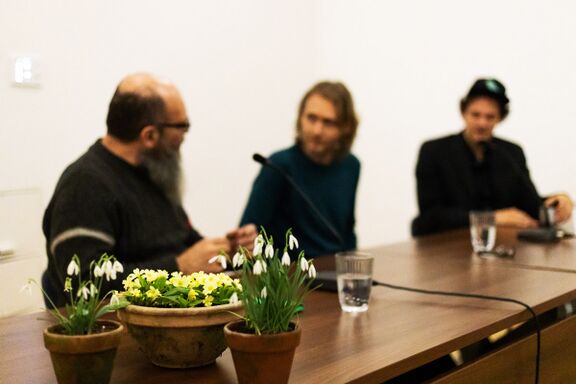
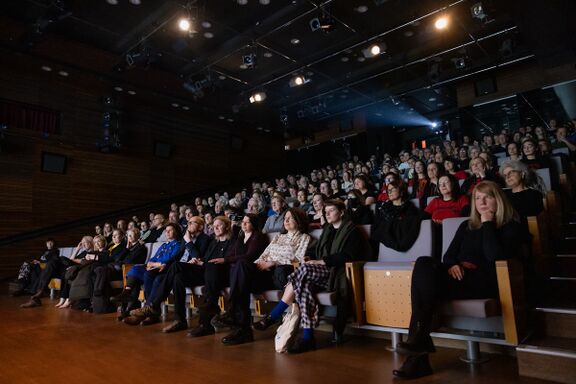
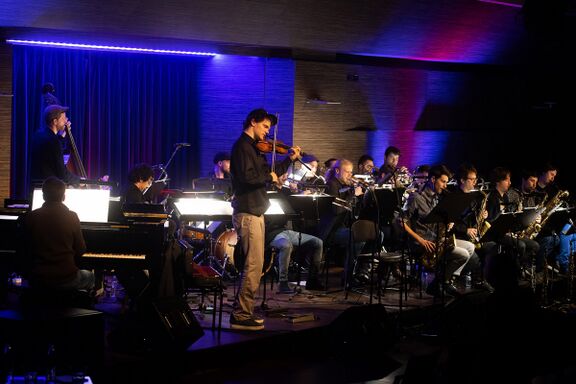
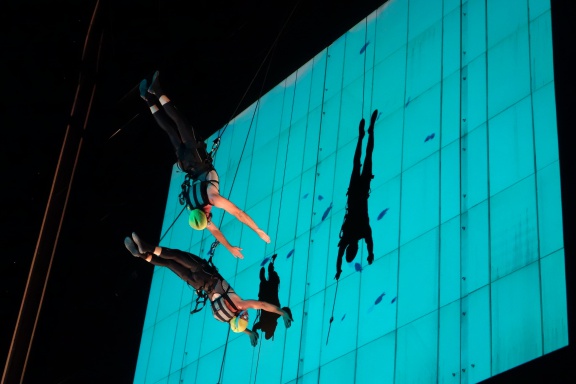
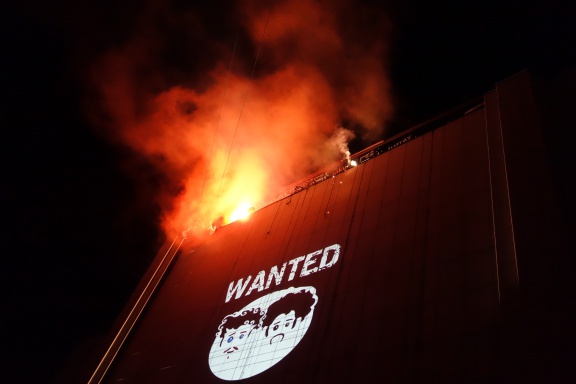
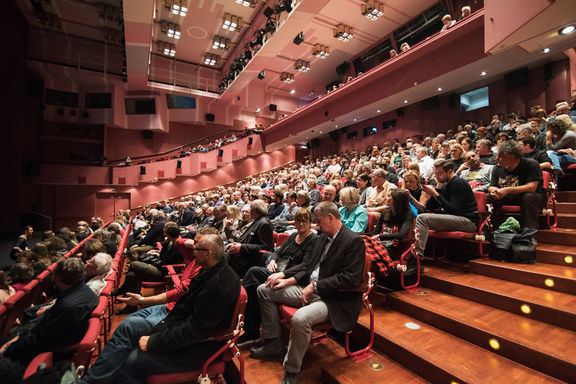
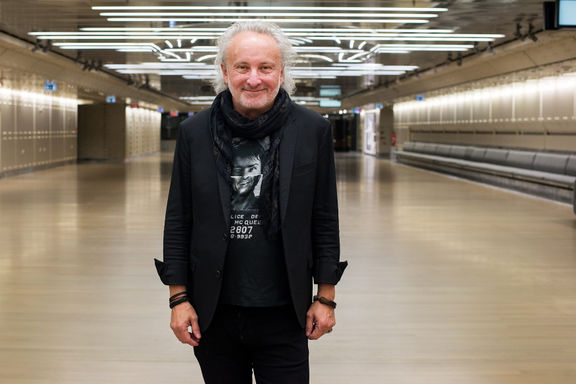
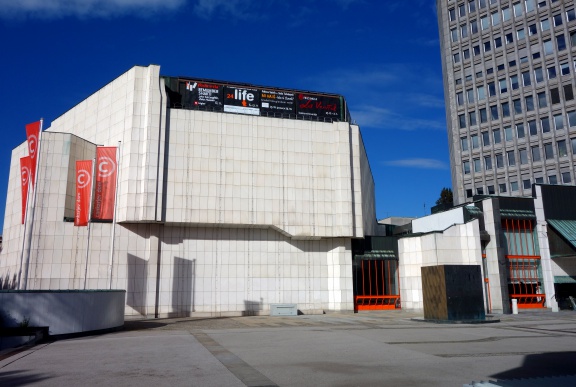
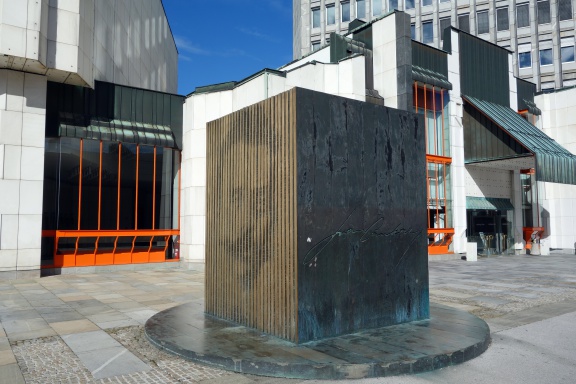
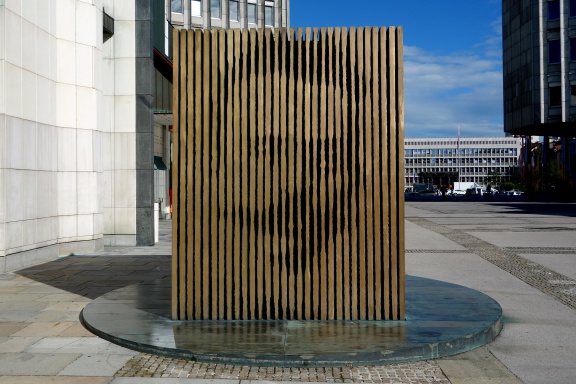
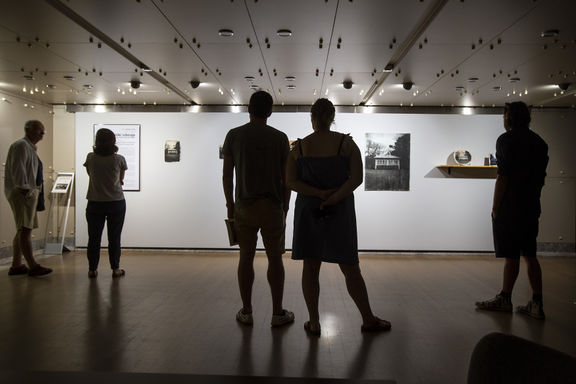
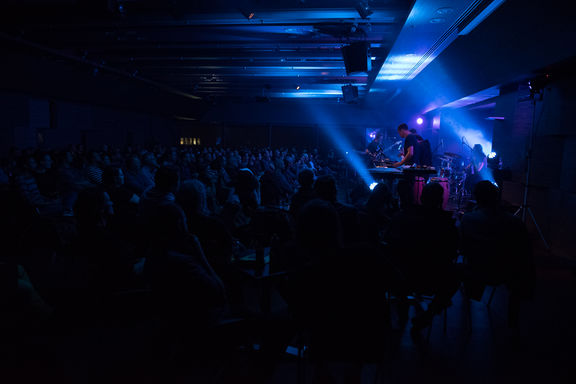

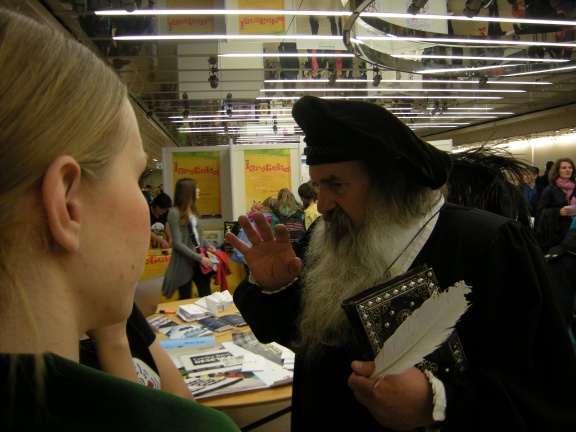
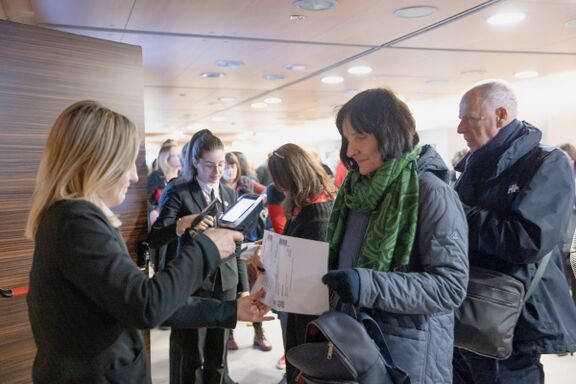
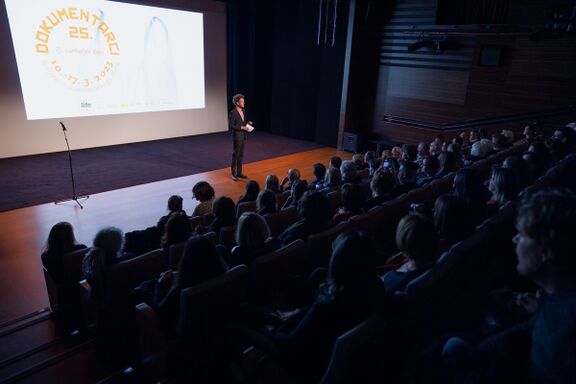
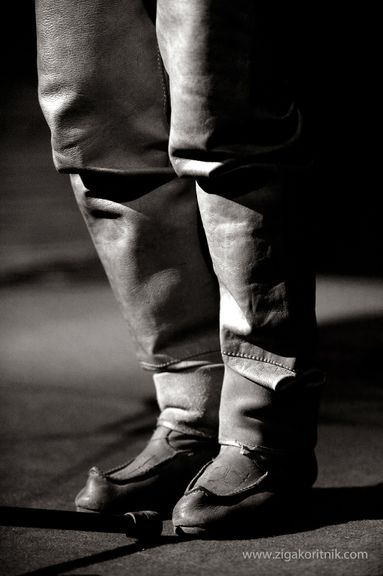
![Rdeča kapica: da te bolje vidim [Little Red Riding Hood: I see that this is better] performed at Cankarjev dom, choreographed by Matej Kejžar, produced by Emanat Institute 2007](/images/thumb/f/f1/Emanat_Institute_2007_Rdeca_kapica_da_te_bolje_vidim_Photo_Luka_Kase.JPG/384px-Emanat_Institute_2007_Rdeca_kapica_da_te_bolje_vidim_Photo_Luka_Kase.JPG)

